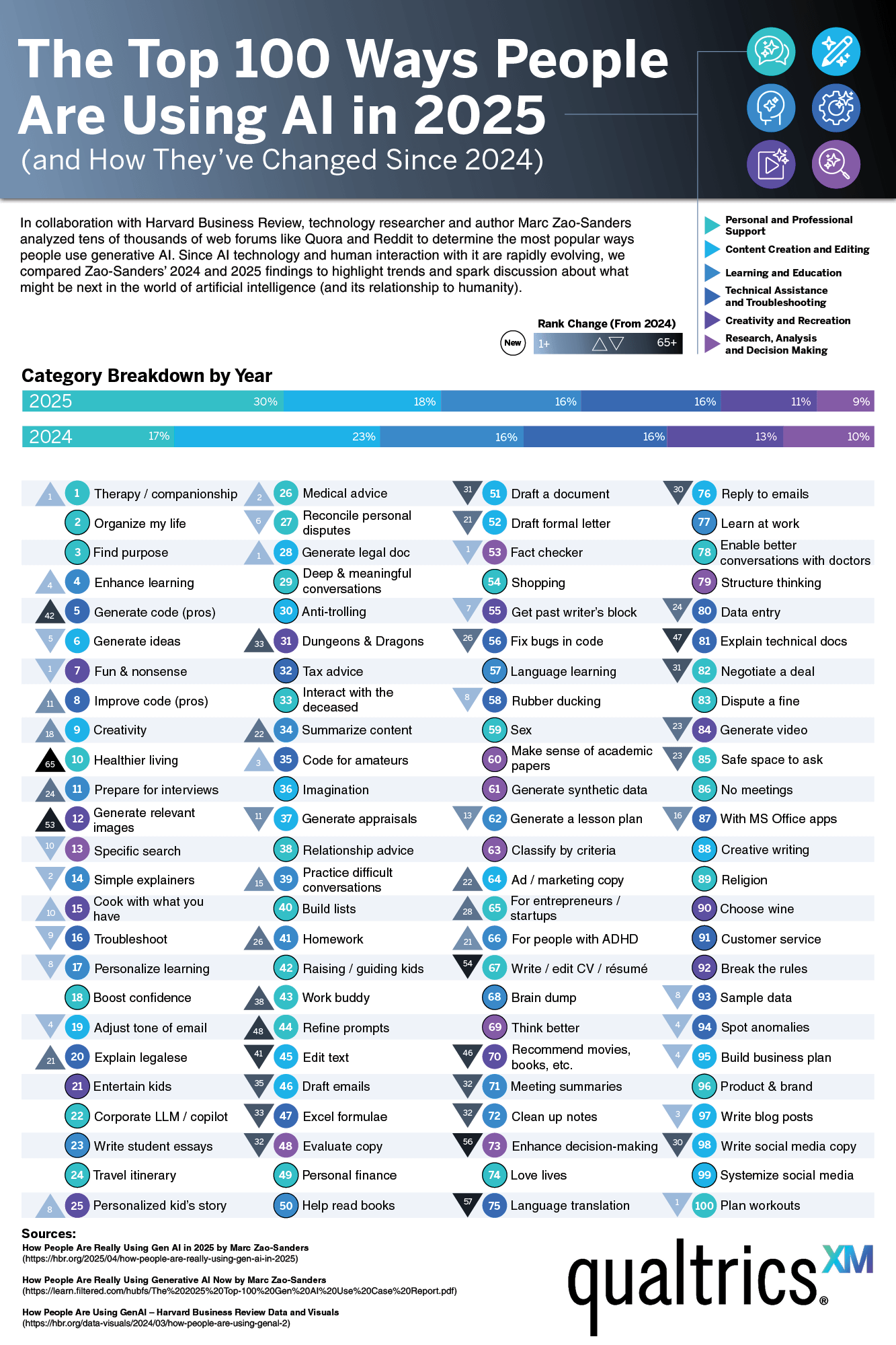Business Visualizations
The Top 100 AI Uses in 2025
The team at Qualtrics released a fascinating new study on the 100 most common ways people are using AI in 2025. They gathered their data from the Harvard Business Review and showed how each use rose or fell in popularity since 2024. As AI continues to grow, improve, and infiltrate more areas of life, these uses are sure to change. But this graphic serves as a great study of the state of AI usage in 2025. Netizens can use this chart to get inspiration for incorporating AI into their next project or use it as a reference when studying AI’s impact on society.
Click below to zoom.
The team found that AI use could be separated into six broad categories. Here are the areas, along with how much use has increased since 2024:
Personal and Professional Support
- 30% (up from 17% in 2024)
Content Creation and Editing
- 18% (down from 23% in 2024)
Learning and Education
- 16% (steady from 2024)
Technical Assistance and Troubleshooting
- 16% (steady from 2024)
Creativity and Recreation
- 11% (down from 13% in 2024)
Research, Analysis and Decision Making
- 9% (down from 10% in 2024)
The most popular and fastest-growing category of AI use is in personal and professional support. This category can encompass many different ways to use AI, such as scheduling, planning workouts, prepping for job interviews, organizing life, and even as a coach through parenting and interpersonal challenges. In fact, the number one use for AI in 2025 is as a therapist or counselor. Many professionals are concerned about this widespread use for therapy since an AI can’t think or empathize as a human can. The average AI user may not realize that AI is a predictive text model that bases its responses on probability and statistics rather than logic and compassion.
Although this use case is declining, many people still use AI for content creation and editing. This can include composing emails and social media posts, experimenting with blogging and creative writing, creating ad copy, structuring business plans, and more. AI is also used to check for errors and refine tone and writing style. Many value preserving their human voice, and this use case has fallen in ranking.
AI is often used for tech assistance, with an increasing number of people using it to create code. AI’s ability to develop workable HTML or automate IT tasks and debug human-written code has vastly improved, so it’s no surprise this use has gained popularity over the past year. AI can be used for less serious purposes, too. People like to experiment with ideas and gain inspiration from AI technology. They use it to compose poems and bedtime stories, get recipe ideas, or plan their next Dungeons and Dragons campaign.
This graphic makes it clear that AI and its uses are constantly evolving to serve people in new ways and adapt to the changing needs of different users. It’s sure to change and adapt in ways we won’t always predict.
